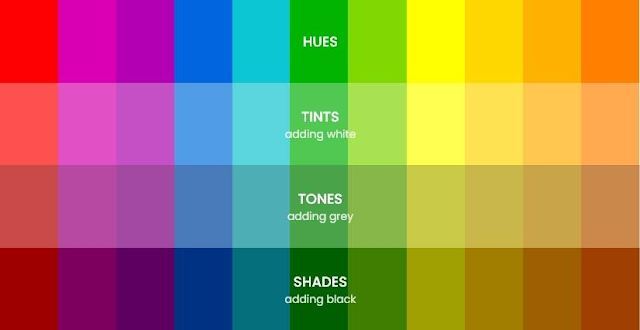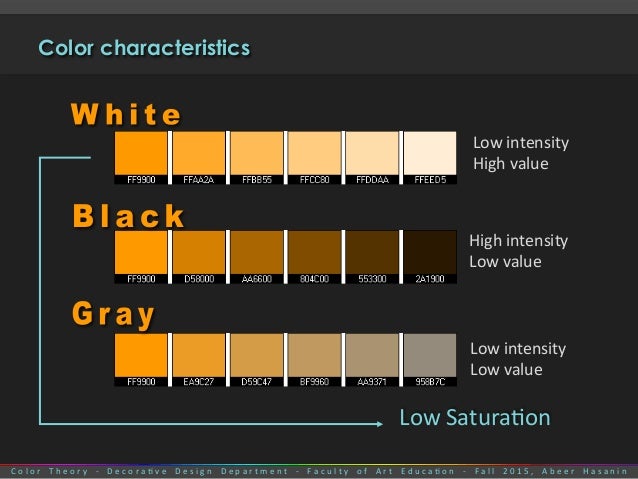COLOR THEORY
Hue: To begin, most people use the terms Hue and Color interchangeably. It's very common, even with artists and designers to assume the two mean the same thing.
Generally speaking, they sort of do, but technically they don't.
The comment above sounds like one of those mind-bending riddles. In fact, the difference between them is actually very simple.
When you use color in any project, it's super helpful to talk or think about each one clearly. So let me explain the difference between Hue and Color in the easiest way possible.
Color is the general term we use to describe every hue, tint, tone or shade we see. White, Black and Gray are often referred to as a color.
A Hue refers to the dominant Color Family of the specific color we're looking at. White, Black and Grey are never referred to as a Hue.
A Hue Color Wheel showing the twelve different categories.
Hue refers to the origin of the color we see. Think of the Hue as one of the six Primary and Secondary colors. In other words, the underlying base color of the mixture you're looking at is either Yellow, Orange, Red, Violet, Blue or Green.
Intensity: It reflects the saturation of the color. This parameter helps to determine whether the color is vivid or pale.
Value: The third property forms the shades and shades of each color. It refers to the lightness or darkness of that color. You create tints by adding white to the base color, and you create shades when you add black.
- Tints: Usually created by blending Hue with white.
- Shades: Usually created by blending Hue with black.
- Tones: Tone formation is a bit more subtle because it requires a combination of both black and white, which is also why Tone looks more natural than Shade and Tint.








Comments